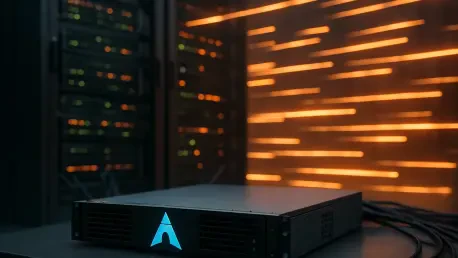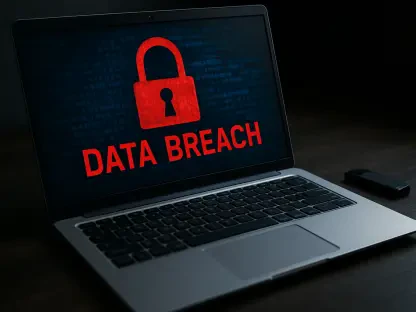I’m thrilled to sit down with Rupert Marais, our in-house security specialist with deep expertise in endpoint and device security, cybersecurity strategies, and network management. With Arch Linux currently under a sustained DDoS attack now entering its second week, Rupert is here to shed light on the technical challenges, the impact on the community, and the ongoing efforts to mitigate the disruption. We’ll dive into how this attack is affecting users, the steps being taken to combat it, and what this means for a volunteer-driven project like Arch Linux in the face of growing mainstream attention.
How would you describe the current situation with the DDoS attack on Arch Linux, and what parts of the project are feeling the most strain?
The situation with Arch Linux is quite serious right now. The DDoS attack started over a week ago and has been relentless, targeting critical components of the project. The main website, the Arch User Repository (AUR), and the forums are bearing the brunt of it. This means users are struggling to access essential resources, download packages, or even engage with the community for support. It’s a significant disruption for a distro that prides itself on community collaboration and accessibility.
What kind of impact is this having on Arch Linux users, and how are they coping with the disruptions?
The impact on users is pretty frustrating. Many can’t access the main site for updates, the AUR for custom packages, or the forums for troubleshooting help. This can stall everything from system updates to new installations. Some users are finding workarounds, like manually switching to mirrors listed in the pacman-mirrorlist package, but it’s not a seamless fix. The community has shown a lot of patience, though, which is critical for a volunteer-driven project under siege like this.
Can you walk us through the steps the Arch Linux team is taking to mitigate this attack?
Absolutely. The team is actively collaborating with their hosting provider to reduce the attack’s impact, tweaking configurations and rerouting traffic where possible. They’re also exploring DDoS protection services, but it’s a delicate balance. They have to weigh factors like cost—since this is a volunteer project with limited funds—along with security effectiveness and the ethical standards of potential providers. It’s a complex decision, but they’re committed to finding a sustainable solution.
As a volunteer-driven project, how is the Arch Linux team managing the workload and stress of handling this crisis?
It’s definitely a challenge. The DevOps team is stretched thin, working around the clock to address the attack while maintaining other critical operations. The community’s response has been a silver lining, though. Users have been incredibly supportive, showing patience and understanding, which helps ease the pressure. There’s also an opportunity for skilled community members to step up, whether by offering technical assistance or simply spreading awareness of temporary solutions.
One issue users are facing is with tools like reflector and mirror lists. Can you explain why these tools are struggling and what users can do about it?
Sure. Tools like reflector are designed to help users find the fastest mirrors for downloading packages, but they rely on accessing a mirror list from the main infrastructure—which is currently under attack. When the primary servers are down, these tools can’t function properly. My advice for users is to fall back on the default mirrors in the pacman-mirrorlist package. For installation media, download from available mirrors but always verify the files against the project’s official signing key to ensure they haven’t been tampered with.
For those unable to access the AUR due to the attack, can you guide us through alternative ways to install or update packages?
Definitely. When the AUR is offline, users can manually pull packages from the project’s GitHub repository. You’d use a command like ‘git clone’ with the specific branch for the package you need. It’s a bit more hands-on, but it works. Just be cautious—make sure you’re cloning from the official repo and double-check the package contents before building. There’s always a small risk of encountering something malicious if you’re not careful, so stick to trusted sources and verify everything.
Arch Linux has gained a lot of attention recently, especially with its role in SteamOS for the Steam Deck. Do you think this increased visibility could be tied to the motivation behind the attack?
It’s hard to say definitively since the specifics of the attack’s origin are being kept under wraps for now. However, it’s plausible that Arch’s growing profile—especially with its integration into something as high-profile as SteamOS—could make it a more attractive target. Higher visibility often draws both positive and negative attention, and unfortunately, that can include malicious actors looking to disrupt or make a statement. We just don’t have enough public info yet to pinpoint the motive.
Looking ahead, what is your forecast for how Arch Linux and similar community-driven projects can better prepare for cybersecurity threats like this in the future?
I think the future for Arch Linux and other community-driven projects will involve a stronger focus on proactive cybersecurity. This attack is a wake-up call to invest in robust DDoS protection and scalable infrastructure, even if budgets are tight. Collaborating with ethical providers and building redundancy into critical systems will be key. I also foresee the community playing a bigger role—whether through crowdfunding for security tools or contributing expertise. Open-source projects thrive on collaboration, and I believe that spirit will drive innovative solutions to protect against threats like this down the line.









